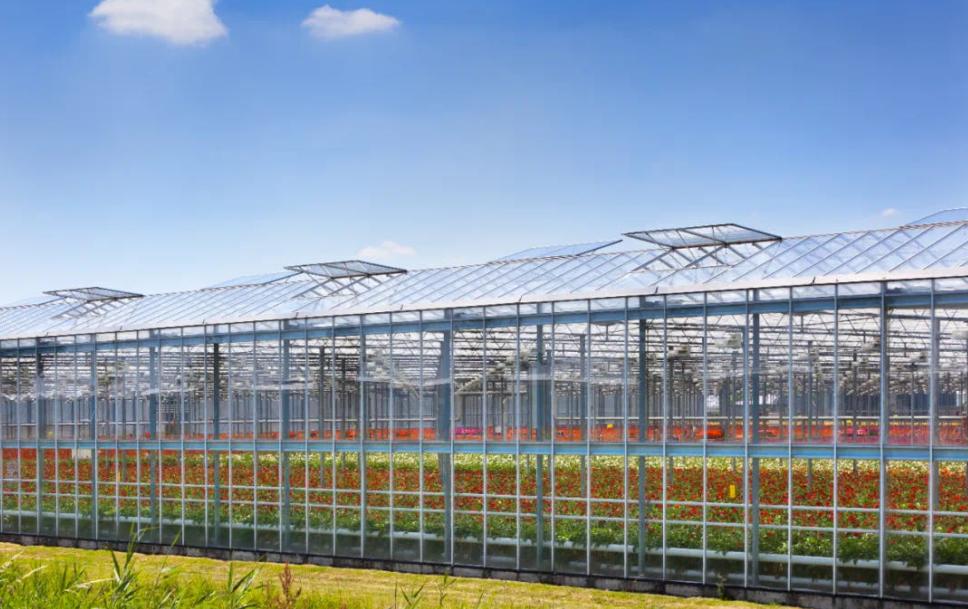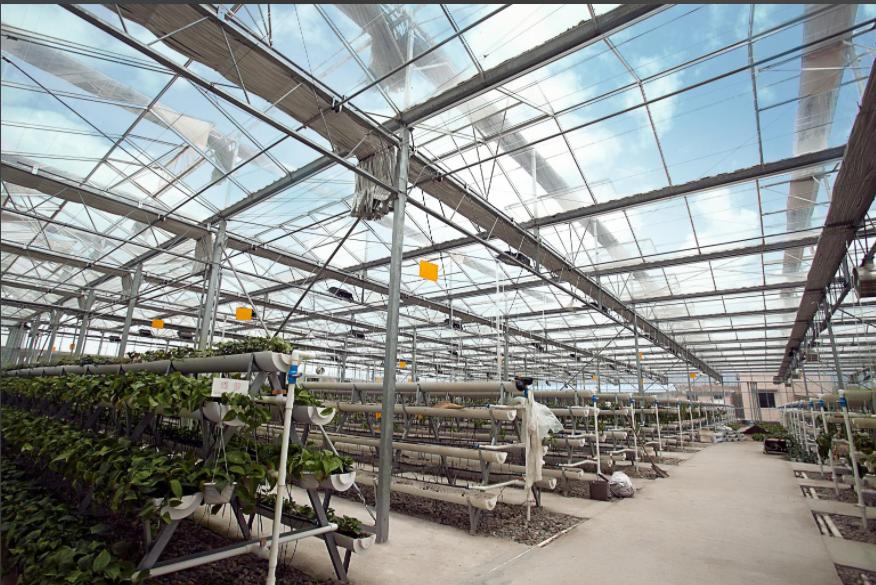As global agriculture confronts the dual challenges of climate change and environmental degradation, the pressure to reduce chemical inputs—especially pesticides and synthetic fertilizers—is greater than ever. Conventional farming methods, though productive, have often come at the cost of soil degradation, water pollution, and biodiversity loss. In this context, glass greenhouses are rapidly emerging as a cleaner, smarter way to grow—offering a model for sustainable food production with significantly lower dependence on harmful agrochemicals.
Why Do Traditional Farms Rely Heavily on Chemicals?
Open-field agriculture is exposed to countless variables: pests, diseases, nutrient depletion, and unpredictable weather. To maintain yields, farmers often resort to heavy pesticide applications and high volumes of fertilizer. While these methods can temporarily boost production, they also cause long-term environmental harm and increase operational costs.
Moreover, the overuse of chemicals can result in resistant pests, soil toxicity, and residual contamination, threatening both crop quality and human health. It’s clear the system needs to change—and controlled environment agriculture (CEA), particularly glass greenhouses, offers a viable path forward.

How Do Glass Greenhouses Reduce the Need for Pesticides?
Inside a glass greenhouse, the growing environment is sealed, clean, and controllable. This alone drastically reduces the chances of pest invasions. In many advanced systems, insect-proof screens, positive pressure ventilation, and biosecurity protocols further limit exposure to harmful insects.
More importantly, many glass greenhouses now adopt Integrated Pest Management (IPM) strategies. These include:
Biological control: releasing natural predators like ladybugs or parasitic wasps;
Sticky traps and pheromone lures to monitor pest populations;
Targeted treatments, only when necessary, using biological or minimal-risk chemicals.
As a result, growers can often eliminate or drastically reduce chemical pesticide use, protecting both consumer health and ecological balance.
What About Fertilizer Use—Can That Be Minimized Too?
Absolutely. In traditional farming, nutrients often leach into groundwater or are washed away by rain. But glass greenhouses utilize precision fertigation systems, where water and nutrients are delivered directly to plant roots in exact quantities. This system prevents runoff, reduces waste, and ensures optimal nutrient uptake.
In hydroponic or soilless systems, commonly used in glass greenhouses, nutrient formulations are continuously monitored and adjusted, achieving maximum efficiency with minimal input. In some cases, fertilizer usage can be cut by 30–60% compared to field production—without compromising yield or quality.
Some greenhouses are even integrating organic compost extracts, microbial inoculants, or recycled nutrient solutions, pushing the boundaries of circular and regenerative agriculture.
What Is the Environmental Impact of This Green Production Model?
By reducing chemical inputs, glass greenhouses:
Lower water pollution from fertilizer runoff;
Protect soil health, even in outdoor areas surrounding the facility;
Preserve beneficial insect populations, vital for pollination and ecosystem balance;
Reduce greenhouse gas emissions associated with fertilizer manufacturing and application.
These benefits align closely with global goals such as sustainable development, food safety, and climate-resilient agriculture.
What Role Does Technology Play in Supporting Green Production?
Smart glass greenhouses are equipped with sensors, AI-driven climate controls, and real-time monitoring platforms. These technologies allow for data-driven decisions about when and how much to irrigate, ventilate, or fertilize. When conditions are precisely managed, plants grow faster, healthier, and with fewer external inputs.
For example, automated dosing systems can tailor the exact nutrient mix based on plant growth stage, reducing unnecessary application. Meanwhile, early pest detection systems can trigger biological controls before infestations escalate.
This high level of automation supports sustainable intensification—growing more with less, in a way that supports both profit and planet.

What Is CFGET’s Contribution to Sustainable Greenhouse Practices?
At the forefront of this transformation is CFGET (Chengfei Green Environment Technology Co., Ltd.), a global provider of custom-designed glass greenhouses optimized for sustainable agriculture. With more than 28 years of expertise, CFGET integrates advanced fertigation, IPM-friendly structures, and smart environmental controls into every project.
Their greenhouses have helped growers in Europe, Asia, and Africa reduce chemical use, increase yields, and meet higher environmental standards demanded by consumers and regulators. Whether for leafy greens, berries, tomatoes, or herbs, CFGET empowers growers to embrace a greener production model without compromising productivity.
Conclusion: Towards a Cleaner Future for Farming
The shift toward sustainable agriculture isn’t just a trend—it’s an urgent necessity. As the environmental cost of conventional farming becomes unsustainable, glass greenhouses offer a clear, scalable solution that bridges productivity with environmental stewardship.
By drastically reducing the use of pesticides and fertilizers, and integrating technology to fine-tune every input, glass greenhouses provide a model for responsible, efficient, and profitable agriculture.
For farmers looking to meet the demands of tomorrow’s markets—and protect the ecosystems they depend on—the path forward is clear, and it’s made of glass.
Post time: Aug-10-2025







 Click to Chat
Click to Chat